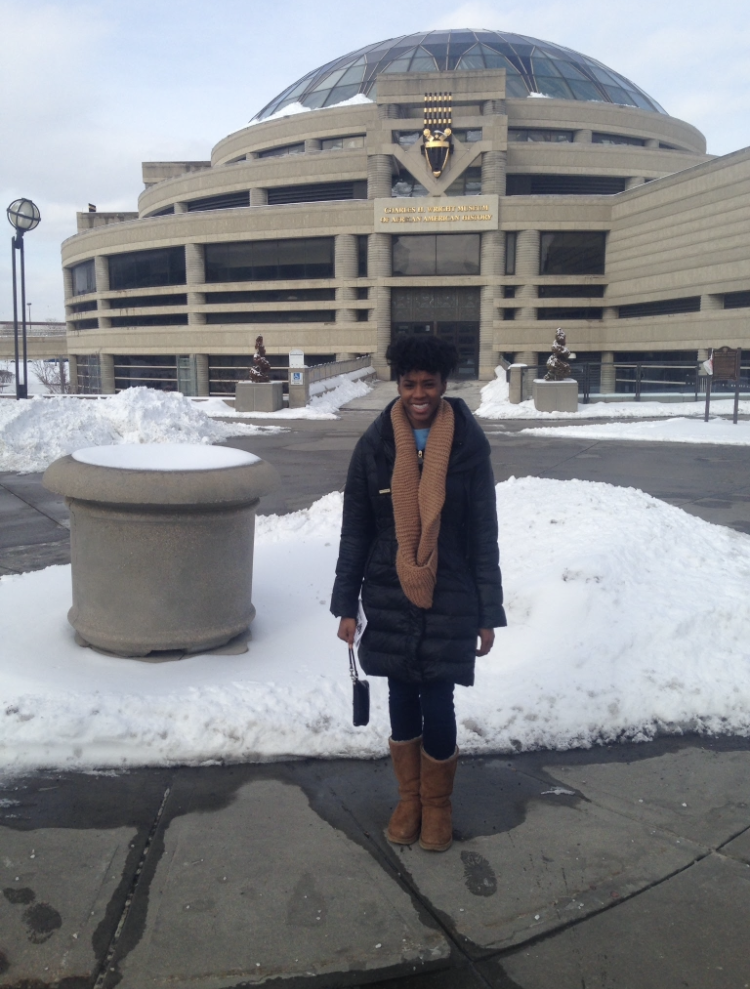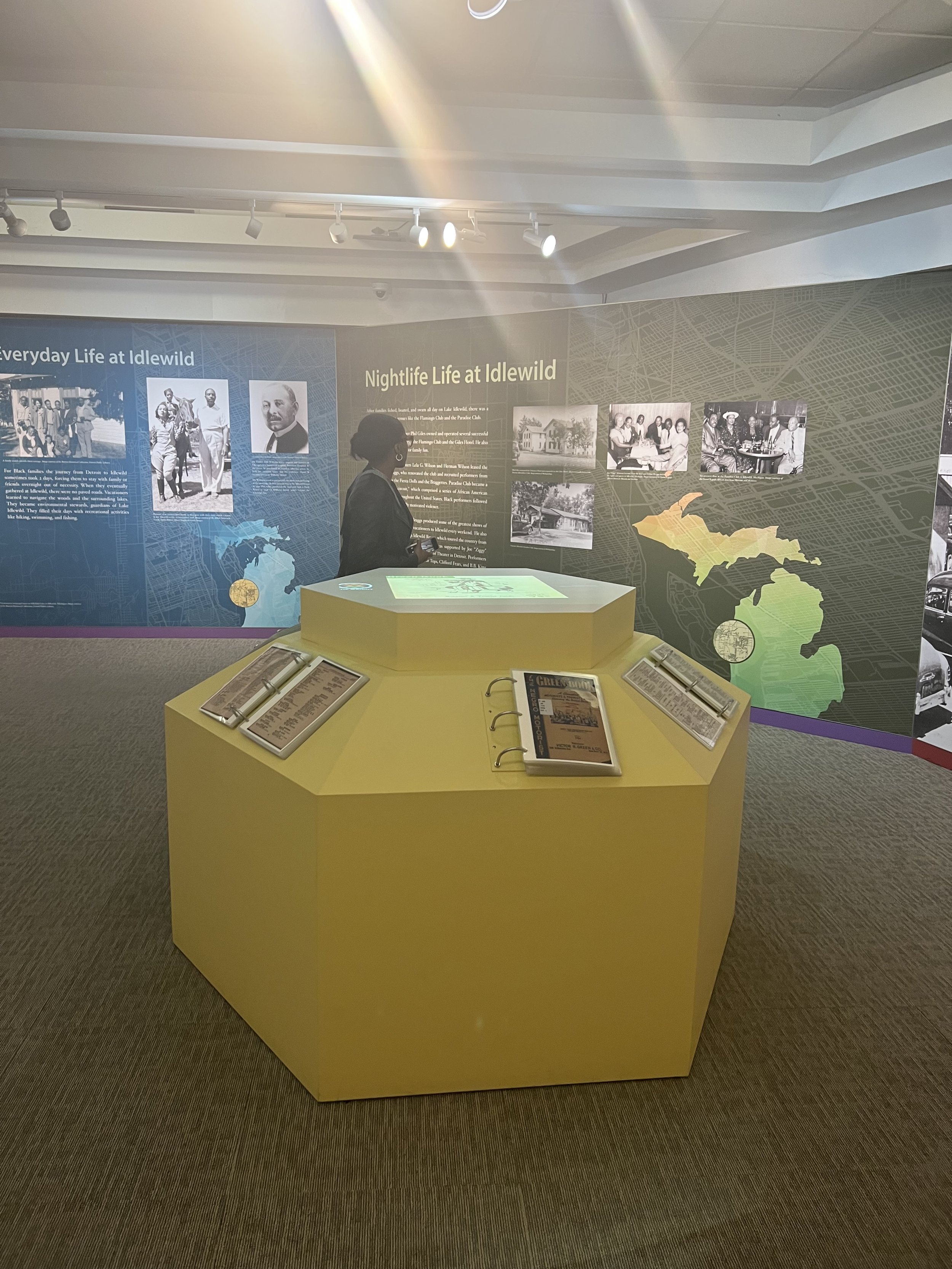Reflecting on 10 Years in Detroit
My first visit to the Wright Museum 10 years ago.
My recent trip to the Wright Museum.
I often encounter a certain reaction when I tell people where I live and for how long. Their eyes reflect a certain level of suprise or amusement. Oftentimes, I am asked the typical follow-up question: "In the city or outside?" I always respond firmly: “Detroit.” In reality, I want to proudly declare that I live in THEE Detroit, the one and only.
I recently marked a decade of living in the Motor City, my beloved adopted hometown. My first visit to this historic city was in May 2013 when I came for the final interview weekend for the Challenge Detroit program, which introduced me to the city. I vividly recall my arrival on a chilly Spring day, at the interview site, the Doubletree Suites Fort Shelby, located in downtown Detroit. The building has an illustrious past, as it was constructed in 1917, with an additional 21-story, 450-room tower designed by Albert Kahn, the legendary architect of Detroit, in 1927. Detroit has always been synonymous with innovation, and this hotel was no different. Erected on the site of the old Fort Shelby military fort, the hotel joined the National Register of Historic Places in 1983. The structure boasted modern amenities such as separate bathrooms with running water and modern heating, making it a trailblazer in the hospitality industry.
I moved to Detroit within a month of the city filing for the largest municipal bankruptcy in United States history. When I announced that I was moving to Detroit, many people were surprised and expressed concern to my parents. They whispered, "Detroit? You're letting her move there?" However, my mother's response was not unexpected for those who know her well. Without hesitation, she said, "I come from a similar place as Detroit, and I know it can't be all bad." Of course, in her infinite wisdom, she wasn’t wrong. I have always said that the issues here aren’t “Detroit problems”, they are problems that just so happen to be in Detroit. Many of our industrial epicenters and Rust Belt meccas that built our nation have experienced similar difficulties.
I have developed a deep admiration for Detroit, thanks to its rich history, significant contributions to the automotive, music, and labor industries, and stunning architectural landmarks. During my initial visit, I had the pleasure of staying at the historic Fort Shelby Hotel, which further solidified my appreciation for the city. Since then, my fascination with Detroit has only grown stronger, and I find myself drawn to it more and more with each passing year. Maybe grit, determination, and resolve somehow permeate the air. But, to put it simply, I love this city.
One of my favorite places in Detroit is the Charles H. Wright Museum. I visited the Wright Museum for the first time courtesy of my fellowship program in early 2014. Founded in 1965, it was the largest Black history museum in the United States before the opening of the National Museum of African American History and Culture in Washington, D.C. One of the museum’s most notable moments was on August 28, 2018, when Aretha Franklin’s solid brass and gold-plated casket arrived at the Wright Museum. Franklin’s casket was stationed in the museum’s rotunda as fans from across the globe arrived to pay their final respects to the Queen of Soul.
I recently went to the Wright Museum to see two exhibits, "Sanctuary" by Derrick Adams and "Mapping the Michigan Green Book," which were both inspired by the Green Book. This annual guidebook was published for 30 years during the Jim Crow era and listed hotels, restaurants, guest houses, gas stations, and other businesses that welcomed Black people when segregation was the law of the land. "Mapping the Michigan Green Book" specifically highlighted Michigan sites for Black motorists and tourists. This visit marked almost five years since the hometown tribute to the Queen of Soul and ten years since my first visit to the museum.
For many Black Americans, the freedom of travel, particularly north, was liberating at a time when so much of their lives, personal autonomy, and movements were vehemently restricted. As I reflect on my ten years in Michigan, visiting two exhibitions that highlight entire communities, cultures, and industries that were developed and created by and for migrants fleeing Jim Crow’s codified racial terror, seemed particularly fitting. Although my journey north was not predicated on the need to flee outright racial oppression and legalized segregation, I too moved north for something my maternal family did 70 years ago: opportunity.
Throughout my adulthood, I have lived in numerous cities, but none have had as significant an impact on my growth and journey as Detroit. We can all learn from Detroit's resilience, because despite its struggles, it has continued to fight and thrive.
I encourage those who have not been to the city, and some of our other historic Midwest powerhouses like Cleveland, St. Louis, East Saint Louis, and Flint, to pay a visit and to say nice things about us. These cities have given the world so very much. If you can, give a little back.
In the meantime, here are my recommendations for books on Detroit. I loved each one and highly recommend them.
Arc of Justice, by Kevin Boyle
Whose Detroit, by Heather Ann Thompson
The World According to Fannie Davis, by Bridgett M. Davis
Black Bottom Saints, by Alice Randall
Black Detroit, by Herb Boyd
The Dawn of Detroit, by Tiya Miles
An Auto Worker’s Journal: The UAW From Crusade to One-Party Union, by Frank Marquart
Terror in the City of Champions, by Tom Stanton
Additionally, I recently purchased a copy of Boys Come First by Aaron Foley from my favorite bookstore in Detroit: Source Booksellers. Grab a copy and let’s read along together!








